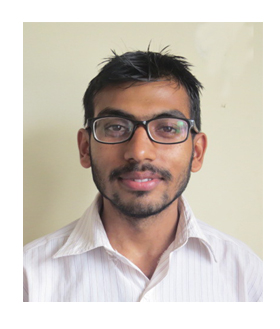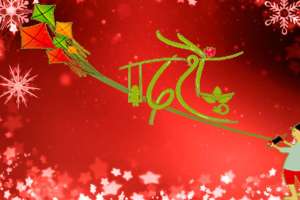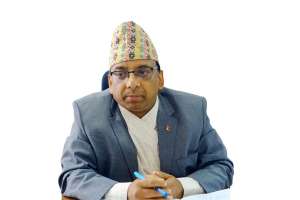
Kefash Maharjan
Peace and development are two sides of
the same coin. Peace and Development go hand in hand. One cannot be achieved
without another. Without peace there can be no development and without
development there can be no peace. Many would argue that if the country is
developed, there is peace in that country. However I disagree with this
statement and proclaim that peace is one of the key for enhancement of any
country and both peace and development work go side by side.
Peace is a state or period in which there
is no war or a war has ended; also freedom from disturbance; and develops
harmony. It is the state of being free form any kind of human conflict and
violence. All the activities of the
country run smoothly in the situation of peace. Peace is the sign of
development and prosperity. Human rights are not violated. People can walk
freely from one place to another without having any fear in their mind. They
can do their business without any obstruction. People respect each other
rights. They are also committed to fulfill their duty toward their society.
Rule and order is respect by all. People can raise their living standard by
working hard. Peace brings happiness among people. They are involved in
development activities.
Peace helps to promotes human rights,
democratic norms, and value. It helps to create the feeling of love, trust,
tolerance, and brotherhood among people. Development process can’t go ahead
without peace and harmony. Peace is the mother of civilization and war is the
demon of destruction. Civilization and development cannot progress if there is
no peace in the country. Development flourishes only in the time of peace.
The dynamic between sustainable development and peace building is cyclical – These are not mutually exclusive activities, but rather they are constantly interacting.
Likewise, development is a long-term
continuous process, which demands the direct involvement of people with other
factors. It means to grow more powerful, aggressive, and prosperous; people
stared to utilize the nature or so called natural resources. The utilization of
the natural resources will build the country in every sector. This change or
progress is called development. The physical infrastructures
like-transportation, communication, electricity etc. lend people charismatic
comfort and luxury in life, but can’t guarantee the smile, fortune, and
prosperous life unless and until they feel secured or out of danger. If they do
have the feel of peace and security, then they will definitely develop a new
passion and enthusiasm to join hands in hands to truly prosperous and dignified
lives. So, we can see many examples of the peaceful countries developing
miraculously within the very short time span.
While on the other hand, countries
involved in the civil war where peace and harmony are destroyed, have witnessed
the collapse of the foundation of sustainable development like-Afghanistan,
Iraq, Sri Lanka, Somalia, Liberia, Rwanda and so on. Where there is conflict,
the development work will remain fragmentary. Conflict reduces development into
destruction, disruption, diversion, and dis-saving. War actions destroy
production and health facilities, war-related deaths and maiming reduces the
workforce, destruction of roads, hinders economic exchange and increase transportation
costs.
Similarly, our country Nepal is not an
exception in this matter. The rising violence has left approximately twelve
thousand dead in the last decade. The long political conflict has ruined the
entire economy and planned development activities. Even a small conflict
develops damage in the society as well as nation. If any parties create
disputes in any kind of development work, the work can't be run without
resolving the conflicts. This will hinder the progress of community. Though
this might be a small example, today if we see around, any kind of improvement
work is done through unity and peace which leads to sustainability. But now,
the country has changed to federal republican democracy state and political
parties have also started working together for development. If this peace and
unity continues, there will be huge change to transform the nation. However, if
the political parties start conflicts in between, the country will stay as and
the development work comes to standstill as of past decades. Let us hope Nepal
will be once again-‘a land of peace, progress, and prospering’ and community
transformation work will be done in every parts of Nepal through local
government and other likeminded organizations.
Development projects do accelerate and flourish only through peace and harmony; situation in the country.
For any country to reach a lasting peace,
the journey must always be led by its own people. The role of the NGO/INGOs is
to support this journey, providing the experience, expertise and using the
convening power at its disposal to give countries in crisis the best chance at
stability and prosperity. Peace is not simply a benchmark to achieve. It
requires ongoing, dynamic participation from the entire society in its
governance and economy to ensure that conflicts don’t escalate into violence. This
is how a country’s development will be inclusive and sustainable; it gives
everyone a stake in a shared future.
In conclusion;
although the correlation between the two is clear and well-documented, several
questions remain unanswered. Reflecting the diverse nature of the development
concept, several indicators have been used to capture it – GDP per capita,
energy consumption per capita, infant mortality rates, life expectancy,
education levels; importance of primary commodities in economy, or
urbanization. The various indicators are associated to varying extents with
different theoretical mechanisms through which conflict and development affect
each other. The availability of several indicators in principle promises
ability for researchers to distinguish statistically between different
explanations. In practice, however, this is difficult since indicators are
highly correlated; mechanisms rarely operate in isolation from each other. Peace
building (thinking as indicator); itself is an active ongoing process. Even
before conflicts breaks out, political and civil society leaders need to think
about proactive ways of encouragement a culture of conflict prevention and
conflict resolution. So, my message today is that we must put peace building,
conflict prevention, and conflict resolution at the center of the sustainable
development. As Mahatma Gandhi said, “There is no way to peace, Peace is the
way.”

































